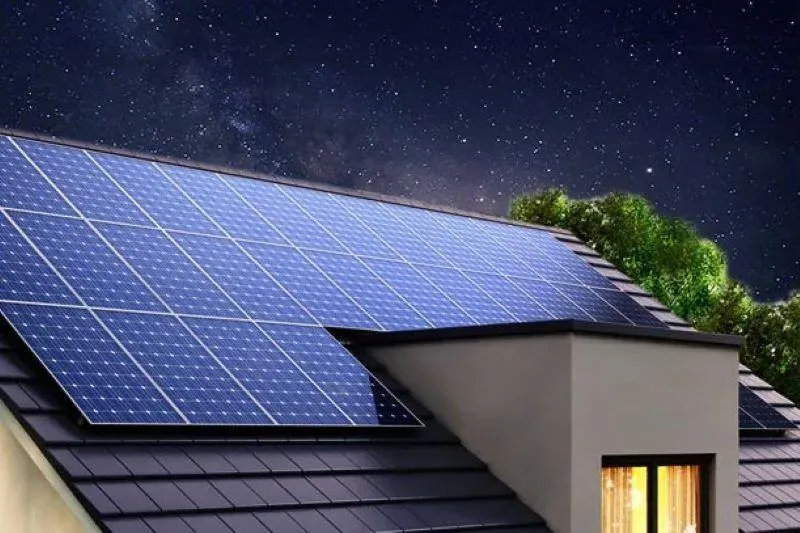HOW SOLAR ENERGY
WORKS AT NIGHT

The earth is constantly receiving an immense amount of energy from the sun.
So much that just one hour of energy received from the sun is more than enough to power the entire earth for a whole year.
That's a lot of energy. And it's this energy that solar panels capture.
However, they can only capture it when they receive rays of light from the sun.
That is, when it's daytime.
Which begs the question: what do solar energy systems do at night?
A lot, actually. Let's look into it.
I. What solar panels do after dark
One of the most common questions we get is whether solar panels keep producing electricity at night.
The short answer is no.
In theory, they could. This is because solar panels can convert any ray of light into electricity, no matter how weak (like streetlights and moonlight).
But that won't happen, since, after sunset, the panels will usually enter a sort of "sleep mode" until the sun rises again. This allows them to "rest" and function when the sun is out, and also increases their longevity.
Then, since solar panels aren't producing electricity after dark, how do solar homes have power at night?
There are two ways this happens: battery storage, and net metering.
II. Battery Storage
Solar energy systems are designed for surplus.
That is, they are specifically made to produce more electricity than a home consumes during the day.
This means that, over the course of a day, solar panels are producing a surplus of energy, that can be stored or sent elsewhere, for future use.
One way to store this surplus energy is in a solar battery.
Throughout the day, solar batteries collect the surplus energy produced by the panels, and then provide it to the house at night.
If your solar panels are of good quality and properly installed, the energy stored by the battery during the day can be enough to power your house for the entire night.
This makes you way less dependent on the grid, and even allows you to keep the lights on during a zone-wide power outage (good batteries can keep energy stored for up to 5 days).
III. Net Metering
Whenever a homeowner has solar panels installed, the house stays connected to the grid.
That way, if needed, the home can still receive electricity from its utility company.
If the panels are producing surplus energy during the day, they can send it back to the grid, and it will be used elsewhere.
Whenever this happens, the homeowner receives credits from their utility company, which he can then keep to use in the future.
This is what's called net metering.
Homeowners with solar often use these credits to pull electricity from the grid at night, when their solar panels are in "sleep mode", thus ensuring that power is available at all times of the day.
As we mentioned earlier, solar energy systems are designed for surplus. If the panels are of good quality and properly installed, the credits homeowners receive back from their utility company should be more than enough to cover the cost of powering their home at night.
This means that they can actually have a surplus, not just of energy, but also of credits, which they can get back on their account at the end of the year.
And this is how solar energy works at night.
If you want, you can even have these two things (battery and net metering) working side by side:
1. Store the surplus energy from the daylight in the battery;
2. Use it at night;
3. Send what's left over to the grid for credits.
Whichever option a homeowner chooses, his house will stay on all night, and he'll likely even have some energy left over, either to save for a rainy day, or to send back to the grid for credit.
Free Solar Texas' engineering team is comprised of experts in fields like solar energy, battery energy storage, EV charging and home efficiency.
If you want to get a free quote and design, from a certified Solar Consultant, click here.